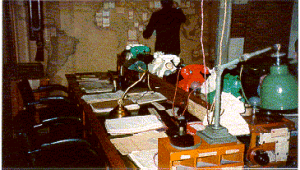IN STOCK ON AMAZON – THE HIDDEN PLACES OF WORLD WAR II AND TIMELY NEWS BELOW ABOUT “MASTERS OF THE AIR”, THE LONG AWAITED SEQUEL TO THE THE EMMY-WINNING BAND OF BROTHERS, PRODUCED BY STEVEN SPIELBERG AND TOM HANKS.
WINTER 2023 UPDATE – AT LAST – After ten years of planning and development and over a year of filming in England the wait is nearly over as Masters of the Air nears its January 26, 2024 two-part opener. Based on the actual saga of the 100th Bomb Group, known as the “bloody 100th,” which lost 86% of its original B 17 complement, the nine-part series has a price tag reputedly twice the $125 million cost of its much loved predecessor, Band of Brothers. Before the introduction of P51 Mustang escorts later in 1943, all the B17 and B24 bomb groups flew with only their own guns for protection and directly into box barrages launched from 40,000 German 88mm flak guns, rated as the war’s best combined artillery and anti-tank gun. And then there were swarms Bf 109 and F-W 190s, themselves among the war’s best fighter planes. The German pilots had been flying and fighting since 1936, resulting in losses for the Eighth Air Force of an extraordinary ten times more than for the Allied infantry. But the “Mighty Eighth” prevailed, launching ever-increasing thousands of sorties from scores of newly built British bases, many remaining even now in parts or major components and which can be visited after 80 years. Over 200,000 GIs flew up to 35 missions, becoming history’s greatest air armada, able to send 2,000 bombers with 1,000 fighters on a single mission. Soon, their story will be told in the upcoming series.
Five chapters in THE HIDDEN PLACES OF WORLD WAR II explore the bases from then to now, including the author’s dramatic never-seen photos depicting the daily lives of the airmen. O’Connor visited, photographed, walked the same bases, and interviewed participants for their never-before told stories and the overlooked heroism that brought the war to Germany long before the D Day landings.
No reason to wait for the series release. Prepare by pressing the button below to order your copy on Amazon in hardbound, Kindle, or paperback. Of special interest according to readers is that the work appeals to readers who thought that everything of importance had long ago been revealed about the war. Five years after publication, O’Connor’s depiction of the war’s overlooked but still-existing places that were essential to the outcome of history’s greatest war, continues as highly regarded by 95% of its readers. 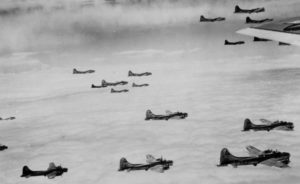
A London Blitz survivor: ” The best book I have ever read about the Second World War.” An Amazon book reviewer: “I wanted to put it down but couldn’t.”
Retelling the heroic epic of the Eighth Air Force in Europe, the much anticipated sequel to Saving Private Ryan, Band of Brothers, and The Pacific, has been underway almost as long as World War 1 and II combined. It will be worth the wait as the ten episode mini-series is set for release January 24,2004 on Apple + TV. .
MASTERS OF THE AIR was filmed in several East Anglia villages, the location then and with the considerable remains now of numerous seldom visited former Eighth Air Force bases. Most of the villages are little changed since the war, including the same pubs visited by the long-gone airmen. Already, neighbors are complaining about the sounds made by the vintage aircraft disturbing garden parties. The series will be largely based on the real-life saga of the 100th Bomb Group based at Thorpe Abbots, located four miles east of Diss, population 605, in Norfolk, England. The former base has a museum dedicated to the 100th BG. Called the “bloody 100th” as a sign of respect, the group lost 177 B-17s and 785 crew killed in action, a casualty rate of 77% in 22 operational months.
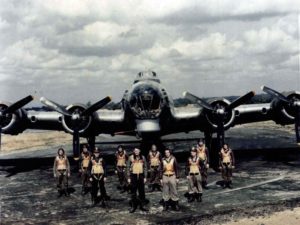
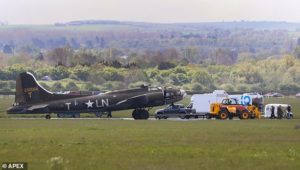

Based on the permit application to the village no actual flying will take place in the 10 part series. Shown are wartime crew members and their B-17. The other photos are of a replica B-17 on the set to be used only for taxiing and interiors. CGI (computer generated imagery) will portray the missions and harrowing air combat.
(Referring to the 100th Bomb Group in text from THE HIDDEN PLACES OF WORLD WAR II) : “Only four of the original thirty-eight co-pilots survived. No complete crew of ten finished intact. At least 450 complete replacement crews served with the 100th BG. Appalling as were the 100th BG losses, they were exceeded by the 91st BG stationed at Bassingbourn. In 340 missions, the 91st lost 197 B-17s, with the entire group of seventy-two bombers replaced an extraordinary four times, including damaged aircraft…they were eagles all.” (Highly recommended are THE WAR LOVER and the much-admired TWELVE O’CLOCK HIGH with Gregory Peck.)

Spielberg assigned relative unknowns to the roles of flight and ground crews, but several have already been cast in other films to be released well before MASTERS OF THE AIR. American, Austin Butler, will be seen in Elvis, with Tom Hanks portraying Col. Tom Parker. Co-star, British actor Callum Turner stars in The Last Letter from your Lover on Netflix. Briton, Josh O’Connor (no kin), will co-star in the series, which is certain to have both love  interests, perhaps competitive, and well-deserved participation by the RAF. Can’t wait? Watch the top-rated season three of The Crown. O’Connor expertly portrays the increasingly confident, but at first immature, Charles, son of Queen Elizabeth, and heir to the British throne. His uncertain relationship and subsequent marriage to Diana is significant.
interests, perhaps competitive, and well-deserved participation by the RAF. Can’t wait? Watch the top-rated season three of The Crown. O’Connor expertly portrays the increasingly confident, but at first immature, Charles, son of Queen Elizabeth, and heir to the British throne. His uncertain relationship and subsequent marriage to Diana is significant.
To bring authenticity to the mini-series, a $7 million airfield including support buildings such as Nissan Huts, was built as a stand-in for the scores of bases once populating the region. Small change indeed compared to the $200 million record budget for the 10-episodes. In comparison, the celebrated Band of Brothers cost $125 million. Based on the filming time of Band of Brothers, the shoot is expected to finish by the end of 2021 for release sometime in 2022. Directing the first 3 episodes is Cary Fukunaga, highly praised for True Detective (2014-16). It is reliably reported that one or more episodes will be in a recreated POW camp in Germany.
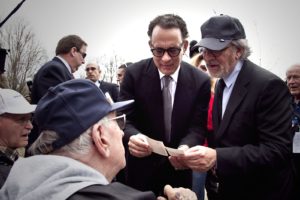 Based on release dates of Spielberg productions such as Saving Private Ryan (1998), Band of Brothers (2001), and the immortal Schindler’s List (1993) Masters of the Air may not begin on Apple TV until late 2022. These additional photos from behind the scenes of the British set, show vintage vehicles and town scenes.
Based on release dates of Spielberg productions such as Saving Private Ryan (1998), Band of Brothers (2001), and the immortal Schindler’s List (1993) Masters of the Air may not begin on Apple TV until late 2022. These additional photos from behind the scenes of the British set, show vintage vehicles and town scenes.
NO NEED TO WAIT – FIVE CHAPTERS OF THE HIDDEN PLACES OF WORLD WAR II ARE SET AT THE SAME BASES AS PORTRAYED IN MASTERS OF THE AIR.
 (L) Chalfont St. Giles today, one of the settings for MASTERS OF THE AIR. The Eighth Air Force had half the war casualties of the entire USAAF, with 17 aviators given the Medal of Honor, 220 awarded the Distinguished Service Cross, and 850 given the Silver Star. The mighty eighth had 261 aces (5 or more enemy downed) and 305 enlisted gunners became aces. As described with numerous never-seen photos in THE HIDDEN PLACES OF WORLD WAR II, numerous base remains and memorials await the time traveler. Five chapters of the 340-page book describe the same bases where, as an example, the 91st Bomb Group at Bassingbourn lost 197 B-17s in 340 missions, with the entire group of seventy-two bombers replaced an extraordinary four times.
(L) Chalfont St. Giles today, one of the settings for MASTERS OF THE AIR. The Eighth Air Force had half the war casualties of the entire USAAF, with 17 aviators given the Medal of Honor, 220 awarded the Distinguished Service Cross, and 850 given the Silver Star. The mighty eighth had 261 aces (5 or more enemy downed) and 305 enlisted gunners became aces. As described with numerous never-seen photos in THE HIDDEN PLACES OF WORLD WAR II, numerous base remains and memorials await the time traveler. Five chapters of the 340-page book describe the same bases where, as an example, the 91st Bomb Group at Bassingbourn lost 197 B-17s in 340 missions, with the entire group of seventy-two bombers replaced an extraordinary four times.
Over 26,000 U.S. dead made it the costliest for America as well, with the Eighth Air Force having ten times the casualties of ground forces. RAF Bomber Command suffered even more with almost 40,000 killed. A Google search will locate the thrilling U-tube trailer for the series made in 2014 when it was titled THE MIGHTY EIGHTH.

 No reason to wait because author, Jerome M. O’Connor’s widely praised first book brings readers to the remains of the same East Anglia, England bases, with vivid then to now descriptions , never-seen photos, and interviews. O’Connor located the same buildings where the First, Second, and Third air divisions were headquartered. Included are photos of scrawled initials, bicycle tire tracks and size 9 footprints by an airman trailing into eternity in curing concrete at Rackheath. One chapter describes the relationship between an English boy of ten and the crew of a B-24 who made him their mascot and greeter after each mission. Jimmy Stewart has a well-deserved chapter set at both of his British bases.
No reason to wait because author, Jerome M. O’Connor’s widely praised first book brings readers to the remains of the same East Anglia, England bases, with vivid then to now descriptions , never-seen photos, and interviews. O’Connor located the same buildings where the First, Second, and Third air divisions were headquartered. Included are photos of scrawled initials, bicycle tire tracks and size 9 footprints by an airman trailing into eternity in curing concrete at Rackheath. One chapter describes the relationship between an English boy of ten and the crew of a B-24 who made him their mascot and greeter after each mission. Jimmy Stewart has a well-deserved chapter set at both of his British bases.
Other chapters go into the nearly intact U-boat bunker bases in France, or to the mansion and the same plywood wall map viewed by General Eisenhower in making the most important decision of the 20th Century. Visit a London mansion owned by the Sassoon family where 59 captured Nazi generals were housed in luxurious conditions, including plated meals, their own pub, and private rooms – but for a reason. Photos show the same rooms on the last day it was open before conversion into condos.
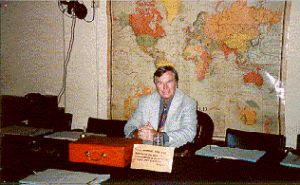
In 1978, seven years before opening as one of London’s most visited museum’s, the author (L) at Churchill’s seat in the Cabinet War Rooms ), was the first to reveal in the Chicago Tribune the intact existence of Churchill’s War Cabinet headquarters. His several cover features were the first to reveal Bletchley Park, where the Enigma cypher device was broken.
Holiday gift giving: A quality paperback edition was released in 2022. Now in three forms. Order now on Amazon.
The left photo below shows Jimmy Stewart with his air and ground crew as part of the 445BG, 703 squadron, in front of B-24 Tenovus at Tibenham. He is in the top row, fourth from left wearing a trench coat. Of five chapters describing the epic missions of the USAAF, an entire chapter describes his heroic missions, and understated heroics as one of the greatest of his storied generation.
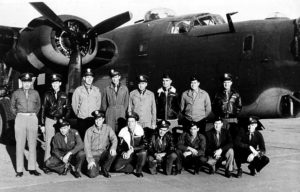
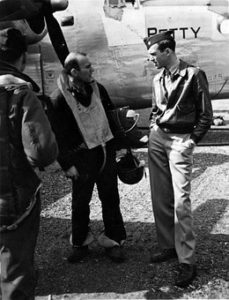
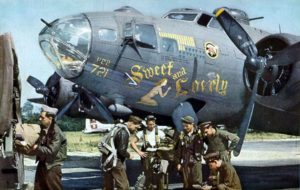

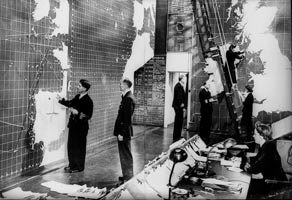
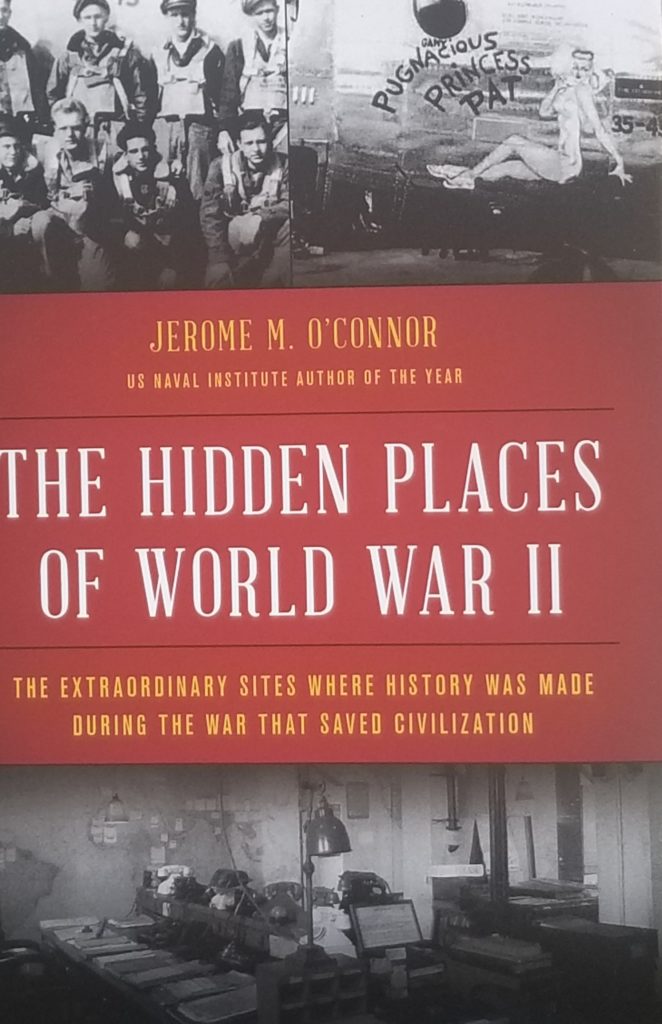
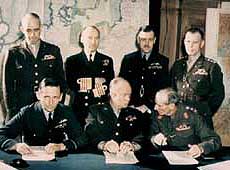


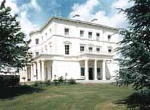 From where the stately home resided in the low hills above Portsmouth Harbor, Ike could almost see the water and part of the vast armada containing every type of naval vessel afloat. In addition to Portsmouth, eleven other British ports were equally laden with so many ships that it was almost possible to walk with dry feet from one vessel to the other, so closely were they moored. The supreme commander of history’s mightiest invasion force knew that every man from general and admiral to mechanic and rifleman, all 156,000 of them and millions more behind, awaited his command to instantly move from camps to landing vessels, or from the ships to the beaches. But it wouldn’t come that day and it wouldn’t come the next.
From where the stately home resided in the low hills above Portsmouth Harbor, Ike could almost see the water and part of the vast armada containing every type of naval vessel afloat. In addition to Portsmouth, eleven other British ports were equally laden with so many ships that it was almost possible to walk with dry feet from one vessel to the other, so closely were they moored. The supreme commander of history’s mightiest invasion force knew that every man from general and admiral to mechanic and rifleman, all 156,000 of them and millions more behind, awaited his command to instantly move from camps to landing vessels, or from the ships to the beaches. But it wouldn’t come that day and it wouldn’t come the next.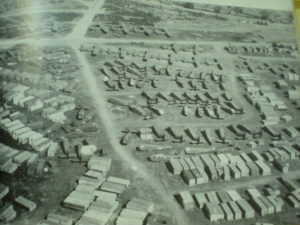 Waiting another two weeks came with the potential of defeat at the water’s edge. Keeping men already at sea or fenced-in at temporary camps another fortnight risked discovery and a loss of the vital edge needed for soldiers approaching sudden combat. Fresh troops rotating into the camps expected to be vacated by the invading soldiers would have nowhere to go. Miles of pre-positioned equipment on roads and at supply depots throughout England would need to be re-situated, presenting a logistical muddle on the narrow roads.
Waiting another two weeks came with the potential of defeat at the water’s edge. Keeping men already at sea or fenced-in at temporary camps another fortnight risked discovery and a loss of the vital edge needed for soldiers approaching sudden combat. Fresh troops rotating into the camps expected to be vacated by the invading soldiers would have nowhere to go. Miles of pre-positioned equipment on roads and at supply depots throughout England would need to be re-situated, presenting a logistical muddle on the narrow roads.![EUROPEMAY71812031[1]](https://historyarticles.com/wp-content/uploads/2013/09/EUROPEMAY718120311-300x225.jpg)
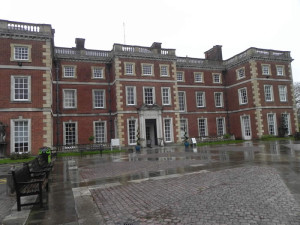

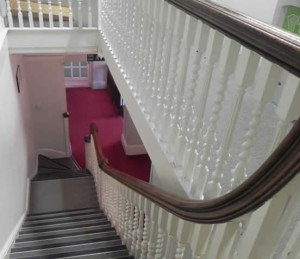

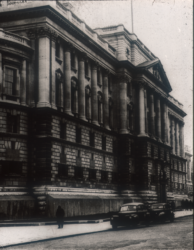
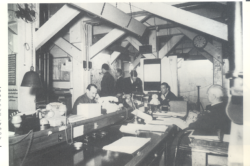
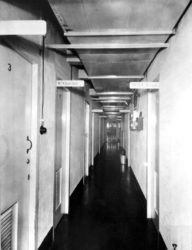
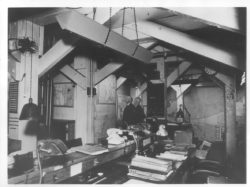
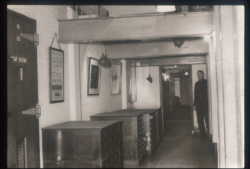
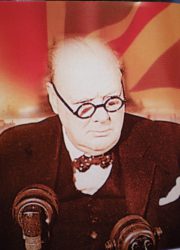 Taking his seat at a wooden chair in front of a five by ten foot Rand McNally world map, the King’s red wooden dispatch box on the table before him, Churchill knew that of all the current and coming crises England confronted, the circumstances at sea were especially appalling. Anticipating action, on September 1, 1939, the day war started, eleven U-boats were already at sea. Two days later on the day war was declared, U30 sank the passenger liner Athenia
Taking his seat at a wooden chair in front of a five by ten foot Rand McNally world map, the King’s red wooden dispatch box on the table before him, Churchill knew that of all the current and coming crises England confronted, the circumstances at sea were especially appalling. Anticipating action, on September 1, 1939, the day war started, eleven U-boats were already at sea. Two days later on the day war was declared, U30 sank the passenger liner Athenia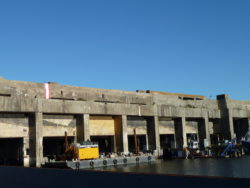 Returning for rest and overhaul to their five impregnable bases along France’s Bay of Biscay, the wolf-packs were soon back at sea, proving they were the hunters, and the thin convoy fibers originating from the United States and Canada were the hunted. Churchill had to buy time before regaining mastery of the seas. But there was neither money nor time. England ’s only hope lay with the 32
Returning for rest and overhaul to their five impregnable bases along France’s Bay of Biscay, the wolf-packs were soon back at sea, proving they were the hunters, and the thin convoy fibers originating from the United States and Canada were the hunted. Churchill had to buy time before regaining mastery of the seas. But there was neither money nor time. England ’s only hope lay with the 32![FDR_FOR_SS_10808[1]](https://historyarticles.com/wp-content/uploads/2013/08/FDR_FOR_SS_108081.gif) The “Arsenal of Democracy”
The “Arsenal of Democracy” 
 Here, the wartime coalition government and separate Defense Committee convened regularly. Meetings, called the “
Here, the wartime coalition government and separate Defense Committee convened regularly. Meetings, called the “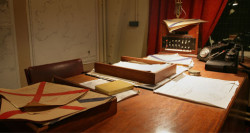 Today, as if ready for a hastily called meeting, the table holds the same ink stained blotters, with pencils and files askew. One tagged file on the table reads OPERATION OVERLORD – TOP SECRET. Hitler would have sacrificed millions more lives for that one file detailing plans for the Allied invasion on June 6, 1944. The separate Map Room is even more complete. A wall to ceiling map showing punctures from thousands of colored push-pins, displays the perilous convoy routes from Hampton Roads to Halifax and on to the British ports. On a raised center console surrounded by desk positions strewn with notes and manila files, seven different colored telephones, dubbed the
Today, as if ready for a hastily called meeting, the table holds the same ink stained blotters, with pencils and files askew. One tagged file on the table reads OPERATION OVERLORD – TOP SECRET. Hitler would have sacrificed millions more lives for that one file detailing plans for the Allied invasion on June 6, 1944. The separate Map Room is even more complete. A wall to ceiling map showing punctures from thousands of colored push-pins, displays the perilous convoy routes from Hampton Roads to Halifax and on to the British ports. On a raised center console surrounded by desk positions strewn with notes and manila files, seven different colored telephones, dubbed the 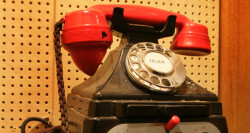
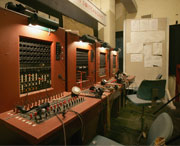
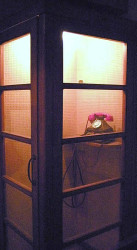 Their insistent ring-ring sent watch officers and messengers scurrying to receive or send messages over the telephones or through pneumatic tubes. Fourteen telephone lines went to British forces, the U.S. military, to embassies, and to the Commander-in-Chief, Western Approaches in Liverpool. Two lines connected to the White House. Frequent calls between Churchill and Roosevelt originating from a separate broom- closet sized room, discussed the latest discoveries from top secret ULTRA. Over 12,000 code-breakers at Bletchley Park, the
Their insistent ring-ring sent watch officers and messengers scurrying to receive or send messages over the telephones or through pneumatic tubes. Fourteen telephone lines went to British forces, the U.S. military, to embassies, and to the Commander-in-Chief, Western Approaches in Liverpool. Two lines connected to the White House. Frequent calls between Churchill and Roosevelt originating from a separate broom- closet sized room, discussed the latest discoveries from top secret ULTRA. Over 12,000 code-breakers at Bletchley Park, the 
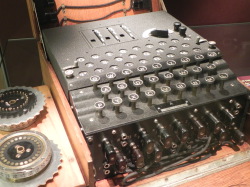
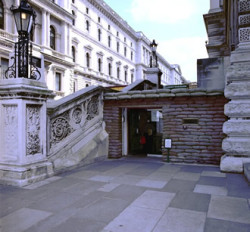
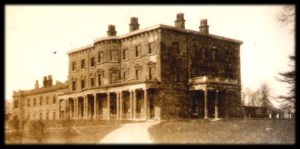 The elegant country house where,on 5 June 1944,General Dwight D. Eisenhower made the historic and risky decision to launch the D Day invasion. After its momentary fame the mansion near Portsmouth – ignored for decades by authors and historians – receded into history. Not quite. We discovered the house as it was on D Day. And now it can be visited with advance application.
The elegant country house where,on 5 June 1944,General Dwight D. Eisenhower made the historic and risky decision to launch the D Day invasion. After its momentary fame the mansion near Portsmouth – ignored for decades by authors and historians – receded into history. Not quite. We discovered the house as it was on D Day. And now it can be visited with advance application.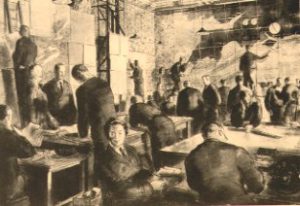 Urged by coils of lashing winds and rain, on the evening of June 4,1944 General Dwight D. Eisenhower entered Southwick House, a mansion near Portsmouth, England appropriated for the Allied Expeditionary Force advance headquarters.
Urged by coils of lashing winds and rain, on the evening of June 4,1944 General Dwight D. Eisenhower entered Southwick House, a mansion near Portsmouth, England appropriated for the Allied Expeditionary Force advance headquarters.![head[1]](https://historyarticles.com/wp-content/uploads/2013/09/head1.gif)
